On November 6, the Vietnam Real Estate Research Institute (VIRES) published the report "Real estate in Tay Ninh province after the merger - Synergy and breakthrough opportunities", showing that the picture of economic - industrial development and logistics potential of the province is entering an acceleration phase.
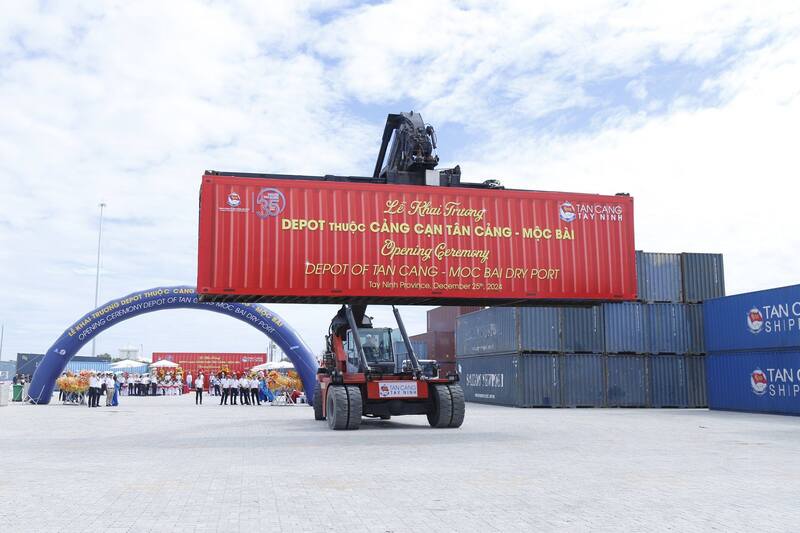
Tan Cang - Moc Bai dry port was put into operation to promote logistics in Tay Ninh province. Photo: Tay Ninh province electronic information portal
Creating a "boost" for logistics
According to VIRES, Tay Ninh after the merger possesses outstanding advantages thanks to the ability to combine the strengths of the two former local economies, creating resonance in policies, infrastructure, population, labor and capital flow. This foundation helps strengthen the internal strength for industrial production and trade.
Previously, at the 1st Congress of Tay Ninh Provincial Party Committee, term 2025 - 2030, Provincial Party Secretary Nguyen Van Quyet emphasized that Tay Ninh aims to become a province with a dynamic and sustainable economy by 2030; a strategic connection center between the Southeast region and the Mekong Delta, and at the same time play an important role in trade with Cambodia.
Data from the People's Committee of Tay Ninh province also shows that the GRDP growth in the first 9 months of 2025 of Tay Ninh after the merger reached 9.52%, leading the Southeast region and ranking 8th out of 34 provinces and cities nationwide, aiming for a GRDP target of 10.1% in 2025.
VIRES's report noted that transport infrastructure is one of the key drivers of growth. A series of key projects such as the Ho Chi Minh City - Moc Bai Expressway (expected to open in 2027), Ring Road 3, Ring Road 4 and Ben Luc - Long Thanh Expressway are being urgently implemented.
When completed, this multi-directional connection system will put Tay Ninh in a strategic position on the regional logistics map, creating conditions for the formation of urban-residential belts, while improving the accessibility of manufacturing enterprises to major economic centers.
In addition, Tay Ninh currently has 46 industrial parks and plans to expand to 59 by 2030, demonstrating a consistent industrial development strategy. This creates a large space to attract production investment, actively supporting the processing, manufacturing and supporting industrial service industries.
In addition, the province is among the leading groups in the country in terms of the Provincial Competitiveness Index (PCI) in 2024, reflecting an increasingly improved investment environment, contributing to increasing competitiveness in attracting industrial and logistics enterprises.
Along with that, the presence of large investors such as Becamex, VSIP, Vingroup or Sun Group creates a spillover effect, supporting the formation of a synchronous industrial - urban - service ecosystem.
Driving force from new industrial centers
The report of the Vietnam Real Estate Research Institute also pointed out the potential to repeat the “success scenario” of Binh Duong 10 years ago. Accordingly, senior experts of the Vietnam Real Estate Research Institute highly appreciated the potential of the commune cluster in Duc Hoa district (old Long An), now part of the new Tay Ninh, including the communes: An Ninh, Hiep Hoa, Hau Nghia, Hoa Khanh, My Hanh, Duc Hoa and Duc Lap. This area has many similarities with Binh Duong around 2015, from the advantage of infrastructure connection to FDI capital flow, labor resources and abundant industrial land fund.
In particular, Duc Lap commune, which directly borders Ho Chi Minh City, is expected to become the starting point for satellite urban models to develop in association with industrial parks and clusters.
According to VIRES, the real estate price level in this area is much lower than in neighboring localities, showing a large growth margin, creating attraction for businesses to invest, develop production and shift labor.
Tay Ninh's economic growth momentum after the merger and the supporting resources are the springboard for Tay Ninh real estate to break through and develop. Senior experts of VIRES have made comments and recommendations.
Accordingly, when the regional connectivity infrastructure is completed, the local economy will accelerate and urban development will spread to areas adjacent to the main traffic axes. In particular, this period is also expected to witness the explosion of commercial real estate, logistics and eco-spiritual tourism, when travel becomes convenient and the local economy has been raised to a new level thanks to the industrial driving force in the first phase.
In the long term, the area bordering Tay Ninh with Ho Chi Minh City is expected to become a "new Binh Duong", a major industrial and urban center of the region. To seize the opportunity, VIRES experts recommend that investors need to have a long-term vision, prioritizing projects with transparent legal status in dynamic axes, especially green urban and integrated urban projects with reputable investors.
Source: https://congthuong.vn/ha-tang-lien-ket-mo-loi-cho-logistics-va-san-xuat-cong-nghiep-tay-ninh-429328.html




![[Photo] Prime Minister Pham Minh Chinh receives the delegation of the Semiconductor Manufacturing International (SEMI)](https://vphoto.vietnam.vn/thumb/1200x675/vietnam/resource/IMAGE/2025/11/06/1762434628831_dsc-0219-jpg.webp)
![[Photo] Closing of the 14th Conference of the 13th Party Central Committee](https://vphoto.vietnam.vn/thumb/1200x675/vietnam/resource/IMAGE/2025/11/06/1762404919012_a1-bnd-5975-5183-jpg.webp)













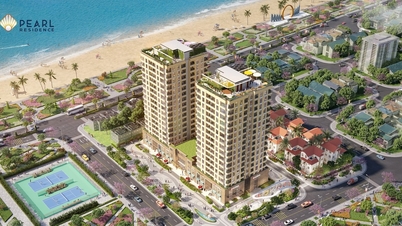

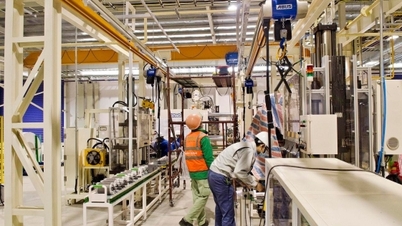




















































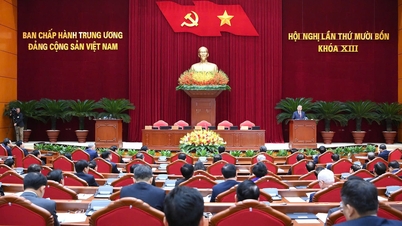
























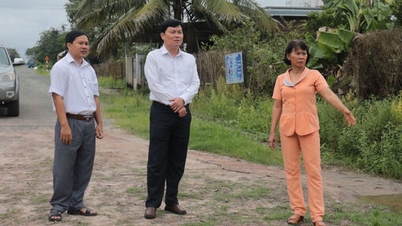














Comment (0)